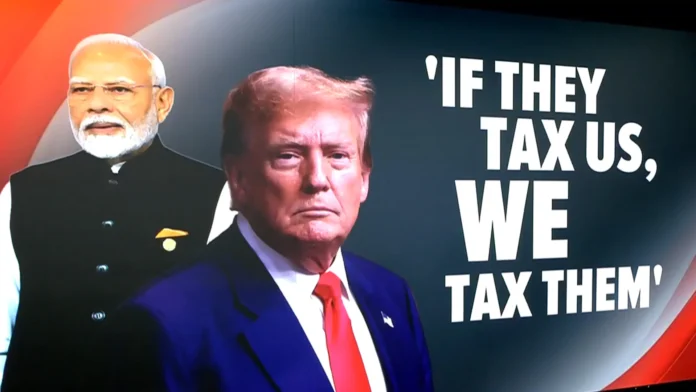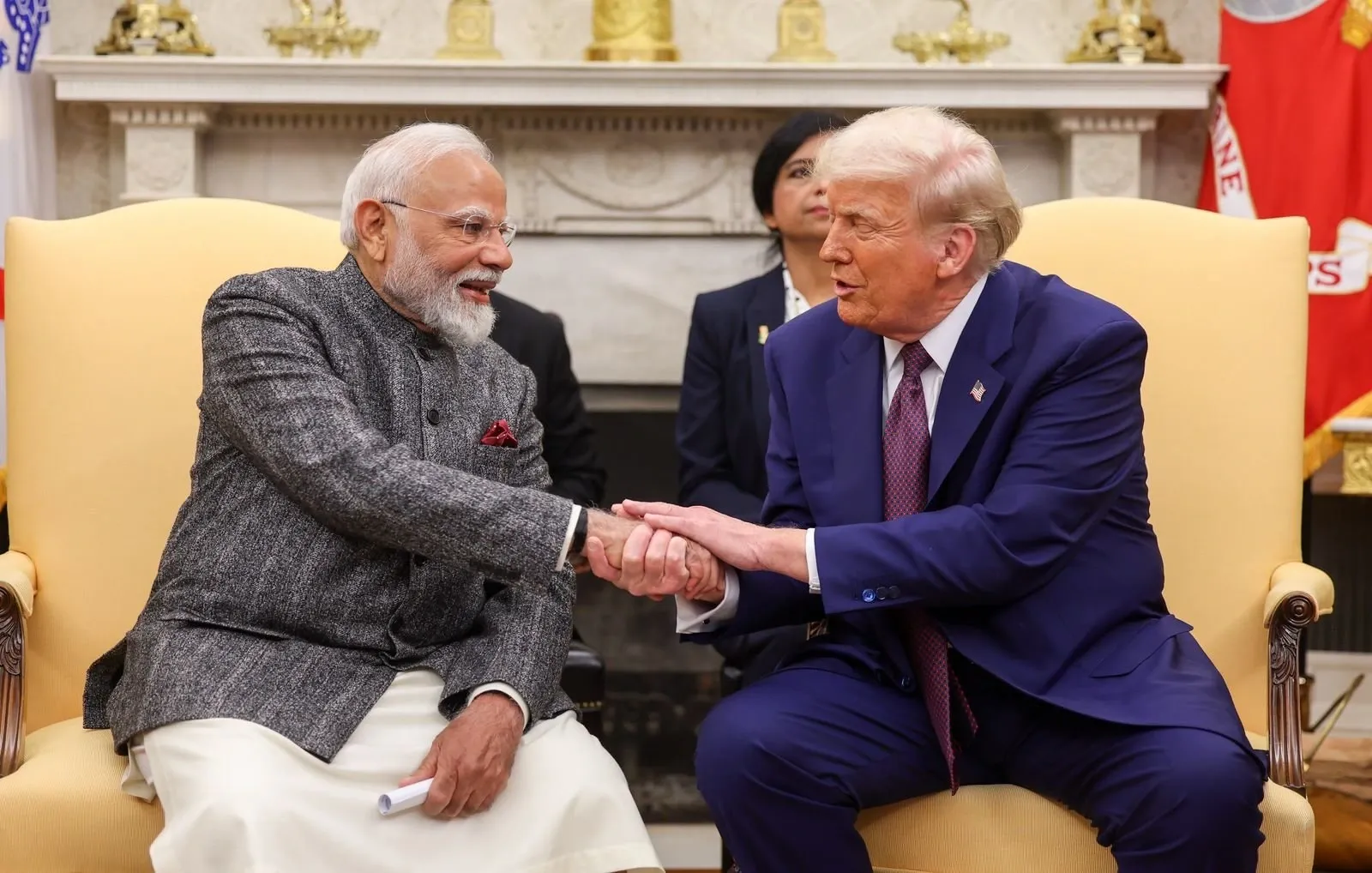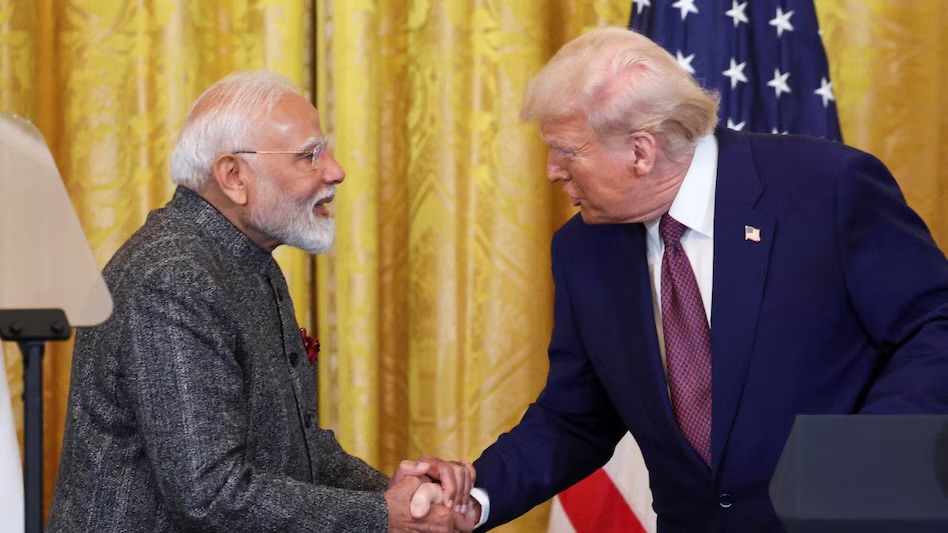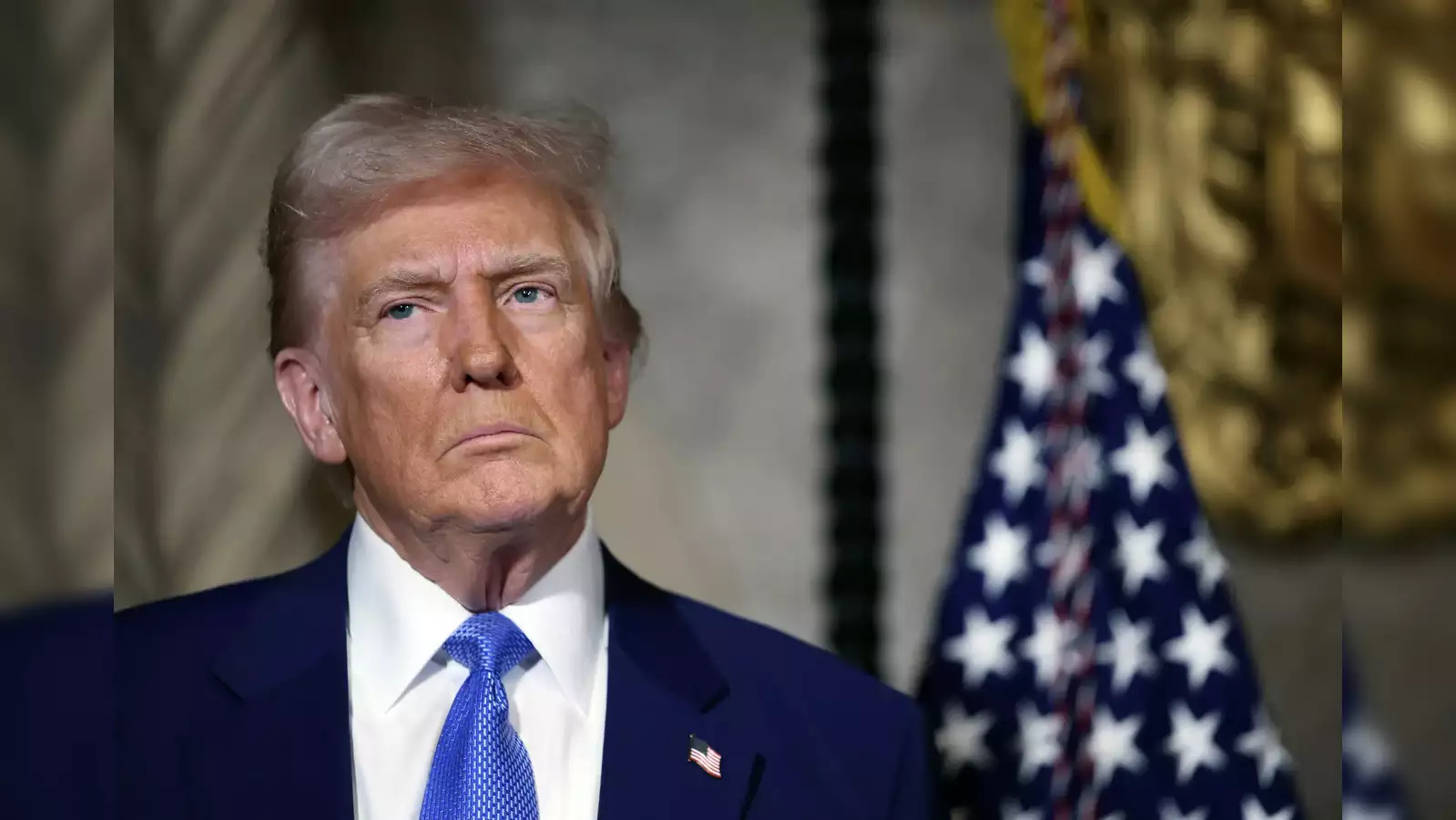In recent days, a loud claim has rocked global politics. U.S. President Donald Trump boldly stated that the BRICS nations—Brazil, Russia, India, China, and South Africa—have fallen apart because he threatened to slap a massive 150% tariff on their goods. Trump did not mince his words when he said these countries were trying to wreck the U.S. dollar by planning to create a new currency. In his own words, “BRICS states were trying to destroy our dollar. They wanted to create a new currency. I don’t know what the hell happened to them. We haven’t heard from the BRICS states lately.” These words have set off heated debates and raised serious questions: Is Trump really using his power to break up global alliances? What does this mean for international trade and the relationships between the U.S. and these powerful nations?
What Are the BRICS Nations?
Before we dive into Trump’s claim, we must understand who the BRICS nations are. BRICS is an acronym that stands for Brazil, Russia, India, China, and South Africa. These five countries are not just any countries. They are large economies with a lot of people and growing markets. The group was formed to promote cooperation in trade, politics, and economic growth. Their main idea is to work together to reduce their dependence on the U.S. dollar and other Western powers. This move is seen by some as a challenge to the traditional economic order.
The BRICS nations have held meetings, made joint statements, and planned projects together. They want to have a stronger voice in how the world runs its economy. Over the years, many have seen them as a counterbalance to the power of the United States and Europe. Even though these countries are very different from one another in terms of politics and culture, they share a common goal: to be more independent in economic matters and to build a new order that suits their needs better.
The 150% Tariff Threat: What’s the Big Deal?
Let’s get into the heart of the matter. Trump’s claim centers on a huge tariff threat—a 150% tax on goods coming from the BRICS nations. A tariff is a tax placed on products coming into a country. A 150% tariff is massive. It means that if a BRICS nation sends a product to the U.S., the cost of that product could more than double because of the extra tax. This kind of move can hurt businesses in those countries by making their products very expensive for U.S. buyers.
Trump’s aggressive stance here is meant to protect American industries and the U.S. dollar. In his view, the BRICS nations were trying to weaken the U.S. dollar by pushing for a new global currency. He sees this as a threat to American power and the economic system that has worked for decades. But is this tariff threat the final nail in the coffin for global alliances? Many experts and leaders from the BRICS nations strongly disagree.
Trump’s Words: A Blunt and Aggressive Message
When Trump speaks, he does not pull any punches. His language is direct, and he uses strong words. By saying, “I don’t know what the hell happened to them,” he shows anger and frustration. He suggests that the BRICS nations are in chaos because of his tariff threat. But many see this as a heavy-handed way to dismiss and belittle these powerful nations.
This kind of rhetoric is aggressive. It seems designed to intimidate other nations and signal that the U.S. is willing to use extreme measures to protect its interests. The language used is not diplomatic. Instead, it is confrontational and loaded with emotion. Trump’s words are intended to rally his supporters and send a message that any challenge to American economic power will be met with force.
The Idea of a New Global Currency
One of the most contentious points in Trump’s claim is the idea that the BRICS nations were trying to create a new global currency. Why is this important? For decades, the U.S. dollar has been the main currency used in international trade. It is seen as a safe and stable currency, which helps keep global trade running smoothly. When countries use the dollar, they are, in a way, tied to the economic power of the United States.
The BRICS nations have talked about reducing their reliance on the U.S. dollar. The idea behind a new currency is to give these countries more control over their economic destiny. They want to shield themselves from the ups and downs of the U.S. economy and avoid the power that the U.S. wields through the dollar. Trump’s claim is that this move is a direct threat to the U.S. economy. He believes that if these countries succeed in creating and using a new currency, the U.S. dollar could lose its place as the dominant force in global trade.
However, it is important to remember that these discussions about a new currency have been going on for a long time. They are not new or sudden moves. The idea of changing the global economic order has been in the minds of many leaders for years. Trump’s claim, aggressive as it may be, is just one side of a much larger conversation about power, money, and influence in the world.
How Would a 150% Tariff Affect Trade?
Imagine you buy a product from a store and suddenly the price jumps by 150% because of a tax. It would be shocking, right? That is exactly what Trump’s tariff threat could do to the trade between the U.S. and the BRICS nations. Products that were once affordable could become too expensive for many Americans. This change could have several effects:
Higher Prices for Consumers
American consumers might end up paying a lot more for products made in Brazil, Russia, India, China, or South Africa. This would hurt families who are already watching every penny they spend.
Loss of Business for Exporters
Companies in the BRICS nations that export goods to the U.S. could suffer big losses. They might find it hard to sell their products, which could lead to job cuts and economic slowdowns in their own countries.
Trade Wars
When one country imposes high tariffs, the affected nations often respond in kind. This can start a trade war—a situation where countries keep raising tariffs on each other’s products. Trade wars hurt everyone involved because they disrupt the smooth flow of goods and services around the world.
Economic Instability
High tariffs can create uncertainty in the global market. When businesses do not know how much they will have to pay or how much they will earn, they become hesitant to invest. This uncertainty can lead to slower economic growth and even a recession in extreme cases.
Trump’s aggressive tariff threat is not just a policy decision—it is a signal that the U.S. is willing to take drastic steps to defend its interests. But such aggressive moves also come with big risks.
The Impact on U.S.-India Relations
Let’s take a closer look at one key relationship—between the U.S. and India. India is one of the BRICS nations, and its economy has been growing fast. For years, India and the U.S. have worked together on many fronts, including trade, defense, and technology. This partnership has been seen as a win-win for both countries.
However, Trump’s aggressive tariff threat puts this relationship in a tough spot. Here’s how it might affect India:
Economic Hurt
If the U.S. imposes a 150% tariff on Indian goods, Indian businesses that sell to America could see their prices skyrocket. This would make Indian products less competitive in the U.S. market. In turn, it could hurt jobs and slow down economic growth in India.
Retaliation Risks
India might not take this threat lightly. In response, India could decide to impose its own tariffs on American goods. This kind of back-and-forth can escalate quickly, leading to a full-blown trade war that damages both economies.
Strained Diplomatic Ties
Trust between countries is built on respect and fair play. When one country uses aggressive measures like this, it can lead to a breakdown in communication and cooperation. India might feel that its efforts to work with the U.S. are being undermined by heavy-handed tactics.
Impact on Joint Projects
The U.S. and India have many projects together, from defense to technology. If trade relations become too strained, these projects could suffer. This could slow down progress on important initiatives that both nations have been working on for years.
The relationship between the U.S. and India is too important to risk with aggressive policies. While the U.S. may be trying to protect its own economy, doing so at the cost of a strong partnership with India could have long-lasting negative effects.
How Do Other BRICS Nations See This?
It is not just India that could be hurt by Trump’s tariff threat. The other BRICS nations—Brazil, Russia, China, and South Africa—also have a lot at stake. These countries have their own plans to work together and to build a system that is less dependent on the U.S. dollar. Here is what might happen in these nations:
Brazil:
Brazil is one of the largest economies in Latin America. It has many exports that are sold all over the world. A 150% tariff from the U.S. could hurt Brazilian businesses and lead to job losses in industries like agriculture and manufacturing. Brazil might be forced to find new markets or risk an economic slowdown.
Russia:
Russia’s economy is very dependent on energy exports, like oil and gas. While the U.S. is a major player in the global energy market, a strong tariff could force Russia to look for other partners. This could push Russia even further into an alliance with nations like China, which might lead to a more divided world.
China:
China is a giant in world trade. It has built its economy on exporting goods all over the globe. An aggressive tariff from the U.S. is seen by many in China as an act of economic bullying. It could speed up China’s efforts to create its own systems that bypass the U.S. dollar. In the long run, this could hurt U.S. influence in Asia and beyond.
South Africa:
South Africa is the smallest of the BRICS nations, but it is still an important player in the region. It has close ties with many African countries and is a key part of the BRICS group’s plans. A heavy tariff from the U.S. could force South Africa to reconsider its trade ties and push it closer to other emerging markets.
The common theme here is that Trump’s aggressive tariff threat is likely to push these countries away from the U.S. Instead of working with America, they might look to each other for support. This would weaken the power of the U.S. in global trade and shift the balance of power in the world.
Is Trump Really Winning or Losing?
Now, let’s ask a big, hard question: Is Trump really winning by threatening these huge tariffs, or is he setting the stage for his own downfall? His supporters might cheer his bold moves, saying he is fighting for American jobs and protecting the economy. They believe that by being tough on trade, he is keeping the U.S. strong and safe from economic harm.
But many critics see it differently. They say that such aggressive measures are short-sighted and dangerous. When you use such extreme tactics, you run the risk of alienating friends and allies. The world is not a place where one country can act alone without consequences. When you push too hard, you might find that your partners have no choice but to fight back. In this case, the U.S. might end up hurting itself far more than it hurts others.
History shows that trade wars rarely lead to lasting success for any nation. Instead, they cause economic slowdowns, hurt consumers, and create a world of uncertainty. Trump’s tariff threat might look good in speeches, but in the long run, it can lead to a divided world where trust is lost and cooperation becomes almost impossible.
The Domino Effect on Global Politics
Trump’s tariff threat is not an isolated event. It is part of a larger pattern of behavior that has been seen over the past few years. The U.S. has taken a more unilateral approach to many issues, from climate change to international security. This aggressive stance is creating a domino effect, where other nations feel forced to respond in kind.
For example, if the BRICS nations start to work more closely together in response to U.S. aggression, they could form a powerful counterweight in global politics. This new alliance might then push back against American policies in forums like the United Nations, the World Trade Organization, and other international bodies. The result could be a world where global decisions are no longer dominated by one country, but instead are made by a more diverse group of voices.
While some see this as a positive change—a move towards a more balanced world—it is also fraught with danger. New alliances can be just as divisive as old ones, especially if they are based on a shared desire to oppose a common enemy. If the U.S. continues to use tariffs and other aggressive measures, it might find itself isolated, with fewer allies to turn to in times of crisis.
Opinion
Trump’s claim that the BRICS nations have broken up because of his 150% tariff threat is a loud, aggressive, and controversial statement. It is filled with harsh language and aggressive opinions that seek to portray the U.S. as a defender of its economic might against a cabal of nations plotting to undermine its power. But when we look at the bigger picture, it is clear that such aggressive tactics are dangerous and have far-reaching consequences.
This move threatens not only the economic stability of the BRICS nations but also the long-standing partnerships that have helped shape global trade for decades. Countries like India, which have worked hard to build a strong relationship with the U.S., now face the risk of economic backlash, diplomatic tensions, and a future where trade wars become the norm.
In our daily lives, the effects of such policies are all too real. Higher prices, job losses, and economic uncertainty can hurt families and communities. In the world of international politics, trust and cooperation are essential for building a stable future. When leaders choose aggression over dialogue, the result is a world that is more divided and less secure.
The question remains: Are we ready for a future where global alliances are shattered by aggressive tariff threats? Is this the way forward for a world that has long depended on cooperation rather than confrontation? The aggressive language and heavy-handed tactics may win applause in the short term, but they sow the seeds of long-term division and instability.
For those who believe in the promise of global trade and international cooperation, the message is clear: We must reject the idea that might makes right. We must push for fair trade practices that benefit everyone, rather than a select few. Only by working together can we build a world that is truly prosperous, secure, and just.
In the end, aggressive tariff threats and hostile rhetoric are not the answers. They are signs of a dangerous path—one that could lead to more conflict, less trust, and a fractured global community. It is up to all of us—leaders, businesses, and ordinary people—to call for a change in direction. We need to stand up for policies that promote peace, cooperation, and fairness in trade.
As we look to the future, let us ask ourselves: Is this the kind of world we want to live in—a world where every disagreement is met with a heavy-handed threat, where alliances crumble under the weight of aggression, and where trust is replaced by fear? Or can we choose a better way—a way where dialogue, mutual respect, and cooperation guide our actions on the global stage?
The choice is ours. The road ahead will not be easy, and it will require effort from all sides to repair the damage that has already been done. But one thing is clear: The era of aggressive tariffs and bullying tactics must come to an end if we are to build a future that is truly secure and prosperous for all.




